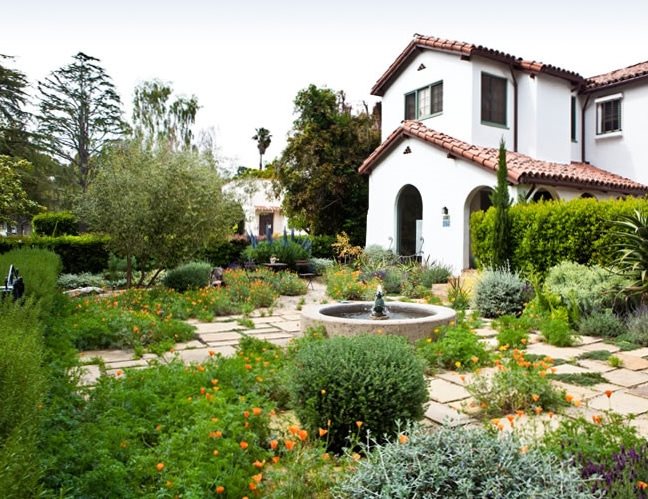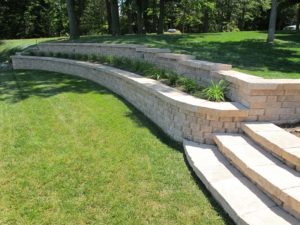Hilton Head Landscapes - Questions
Hilton Head Landscapes - Questions
Blog Article
The 5-Second Trick For Hilton Head Landscapes
Table of ContentsThe 7-Minute Rule for Hilton Head LandscapesThe Of Hilton Head LandscapesThe Ultimate Guide To Hilton Head LandscapesLittle Known Questions About Hilton Head Landscapes.Hilton Head Landscapes Can Be Fun For AnyoneThe Of Hilton Head LandscapesHilton Head Landscapes - TruthsThe Single Strategy To Use For Hilton Head Landscapes
Form compatibility is also a significant part of unity in designone or more strikingly various types are excellent for comparison and focus, yet normally all various other types ought to have some resemblances for a linked appearance. Structure refers to exactly how coarse or great the surface area of the plant or hardscape product really feels and/or looks.
Instances of plants with rugged structure consist of philodendrons, agaves, bromeliads, hollies, palms, and hydrangeas. Qualities that create fine texture consist of small vegetation; thin, strappy fallen leaves (turfs) or high, thin stems; little, dense twigs and small branches; long stems (vines); and tiny, delicate blossoms.
Hilton Head Landscapes Fundamentals Explained
A lot of plants are average appearance, because they can not be defined as having either rugged or great appearance. They are defined by medium-sized leaves with easy forms and smooth edges. The average-sized branches are not largely spaced nor commonly spaced, and the overall kind is commonly rounded or mounding. Medium-textured plants work as a background to web link and link the crude- and fine-textured plants.

To make a room really feel smaller, place the rugged appearances along the outer perimeter and the fine appearances closest to the audience. The detail of the rugged appearance makes the plants show up closer and makes the room really feel smaller sized. The perceived texture of plants can likewise alter with the distance from the plant.
The 9-Minute Rule for Hilton Head Landscapes
Strong colors enhance the contrast and make the appearance show up coarser, while soft colors can flatten appearance. Hardscape with a rugged texturesuch as very rough rocks and vibrant, huge timberstends to make all plant material appear more moderate distinctive. Designers commonly develop an appearance research (Number 8) on paper to aid decide the setup of plant products.
Shade in plant material and hardscape includes passion and range to the landscape. Color is the most noticeable element in the landscape and is usually the focus of most home owners; nonetheless, it is likewise the most temporary aspect, usually lasting just a couple of weeks a year for private plants.
Little Known Facts About Hilton Head Landscapes.
A basic summary of the color wheel includes the three main colors of red, blue, and yellow; the 3 second shades (a mix of two primaries) of eco-friendly, orange, and violet; look at these guys and six tertiary colors (a mix of one surrounding key and second color), such as red-orange. Color theory describes the partnership of colors to each other and how they must be made use of in a composition.

Analogous (sometimes called harmonious) color pattern are any type of 3 to 5 shades that are adjacent on the color wheel, such as red, red-orange, orange, yellow-orange, and yellow, or blue, blue-violet, and violet (Landscaping bluffton sc). The shades relate to each other since they commonly consist of 2 primary shades blended to create an additional and 2 tertiary shades, which means they share common residential or commercial properties
Corresponding shades are often found normally in flowers; a common pair is yellow and violet. Shade is located in the blossoms, foliage, bark, and fruit of plants.
Some Known Facts About Hilton Head Landscapes.
Green vegetation in all its different tones is the leading color by amount, however other shades capture attention quicker due to the fact that of their high comparison to the color green. Shade is also located in buildings, rocks, pavers, timber, and furniture. Most colors in all-natural materials, such as rock and wood, are normally muted and often tend to be variations of brownish, tan, and pale yellow.
Colors have residential properties that can influence feelings, spatial perception, light top quality, equilibrium, and focus. Great colors often tend to be soothing and must be utilized in areas for leisure and tranquility.
6 Easy Facts About Hilton Head Landscapes Described
The "temperature level" of colors can also influence the assumption of range. Great colors often tend to recede and are viewed as being farther away, making a room feel bigger. Cozy colors often tend to development and are perceived as being more detailed, making an area really feel smaller. Shade can likewise be used to record focus and direct views.
As an example, intense yellow, which has the highest strength, also has a high comparison with all other colors (typically referred to as a "pop" of shade) and need to be utilized moderately. A small quantity of extreme color has as much visual weight as a big quantity of a much more controlled or weaker shade.
Similar (often called unified) color plans are any kind of three to five shades that are surrounding on the color wheel, such as red, red-orange, orange, yellow-orange, and yellow, or blue, blue-violet, and violet. The colors are associated per other since they typically include two main shades blended to create a secondary and two tertiary colors, which indicates they share usual buildings.
Our Hilton Head Landscapes Statements
Complementary shades are often found normally in flowers; an usual set is yellow and violet. Shade is located in the blossoms, foliage, bark, and fruit of plants.
Green foliage in all its numerous tones is the dominant color by amount, however other shades catch attention more conveniently due to their high comparison to the color environment-friendly - landscape design hilton head - https://canvas.instructure.com/eportfolios/3001127/Home/Transform_Your_Yard_with_Hilton_Head_Landscapers. Color is also located in buildings, rocks, pavers, timber, and furnishings. Many shades in natural products, such as stone and timber, are typically low-key and have a tendency to be variants of brownish, tan, and light yellow
The Ultimate Guide To Hilton Head Landscapes
Shade is an important aspect for creating rate of interest and selection in the landscape. Colors have residential properties that can affect feelings, spatial assumption, light quality, balance, and focus. One building of shade is described relative to temperaturecolors seem cool or warm and can affect emotions or feelings. Great shades tend to be calming and ought to be utilized in locations for leisure and tranquility.
Amazing shades often tend to recede and are viewed as being further away, making a room really feel larger. Color can also be made use of to catch interest and direct sights - https://pastebin.com/u/h1tnhdlndscps.
For example, bright yellow, which has the highest possible strength, additionally has a high contrast with all other shades (commonly referred to as a "pop" of color) and ought to be conserved. A tiny quantity of extreme color has as much aesthetic weight as a large amount of an extra suppressed or weaker shade.
Report this page